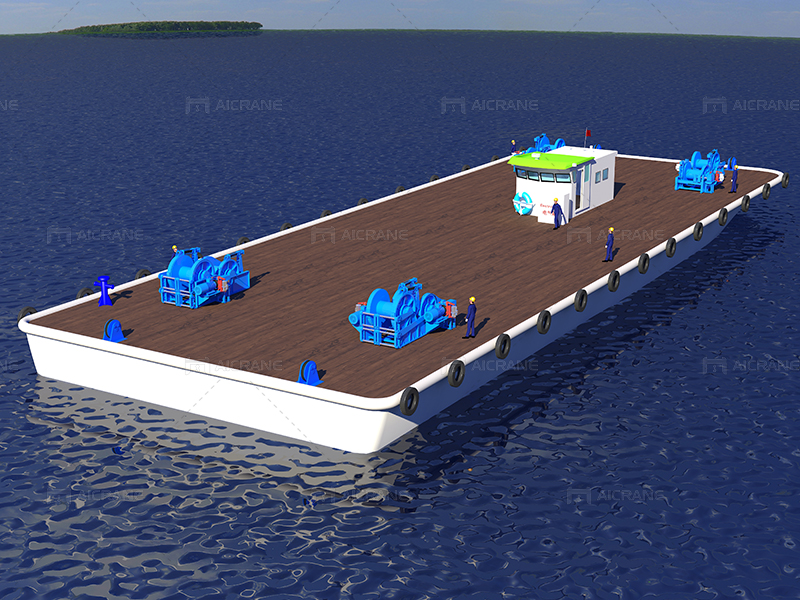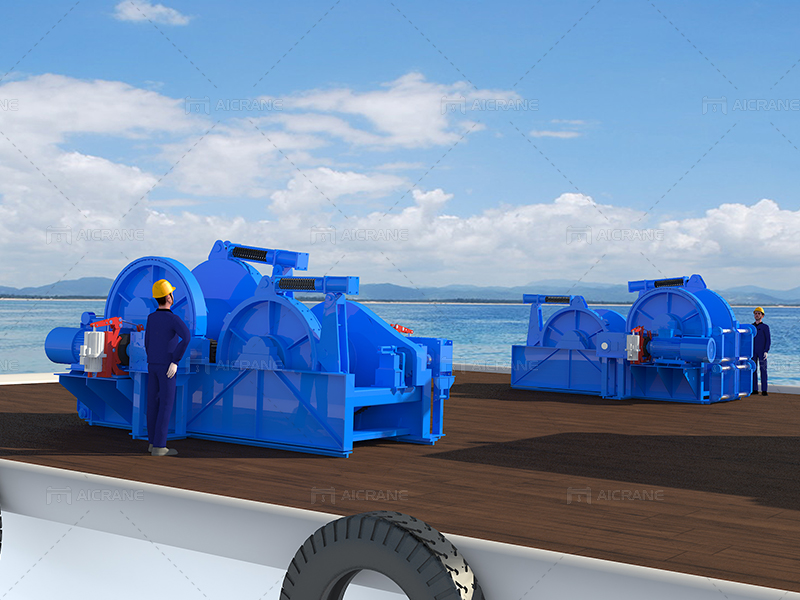In the maritime industry, where precision and efficiency are paramount, electric mooring winches play a crucial role in ensuring the safe and secure docking of vessels. These powerful devices are essential for managing the mooring lines, offering a controlled and reliable mechanism for berthing and anchoring. To truly understand the workings of an electric mooring winch, it’s essential to delve into its key components and their functions, shedding light on the intricate engineering that goes into these maritime marvels.

Electric Motor: The Powerhouse
At the heart of every electric mooring winch is the electric motor. This component serves as the powerhouse, converting electrical energy into mechanical energy to drive the winch’s operations. The choice of electric motor can vary, with common types including AC (alternating current) and DC (direct current) motors. The selection depends on factors such as power requirements, operational conditions, and the specific needs of the vessel.
Gearbox: Amplifying Torque
Working in tandem with the electric motor, the gearbox is a critical component responsible for amplifying torque and regulating the speed of the winch drum. The gearbox ensures that the power generated by the motor is appropriately transmitted to the winch’s drum, enabling the efficient winding or unwinding of mooring lines. The gear ratio can be adjusted to meet the specific demands of different vessels and operational scenarios.
Drum: Where the Action Happens
The drum is the central component that directly interacts with the mooring lines. It is a cylindrical or spool-like structure around which the ropes or cables are wound or unwound. The drum’s design and material are crucial considerations, as they impact the winch’s overall performance and durability. Depending on the application, drums can be configured for single or multiple line deployments, allowing for flexibility in handling various vessel sizes.
Braking System: Ensuring Control and Safety
A reliable braking system is essential for maintaining control during the mooring process and ensuring the safety of both the vessel and the crew. Electric mooring winches are equipped with braking mechanisms that can be either hydraulic or electric. These systems provide the necessary resistance to stop and hold the drum in place when required. The ability to modulate braking force is crucial for precise and safe mooring operations, especially in adverse weather conditions.

Control System: Precision in Operation
The control system is the brain of the electric mooring winch, responsible for orchestrating the various components to achieve seamless and precise operations. Modern electric mooring winches often come equipped with advanced control systems that enable automation, allowing for the customization of tension levels, line speed, and other parameters. This not only enhances operational efficiency but also reduces the workload on the crew, making mooring processes more manageable.
Monitoring and Safety Features: Intelligent Vigilance
To ensure the longevity of the winch and the safety of maritime operations, monitoring and safety features are integrated into mooring winches. These can include sensors to detect line tension, temperature, and other critical parameters. Automatic shutdown mechanisms may be incorporated to prevent damage in case of excessive loads or unforeseen issues. These safety features contribute to the overall reliability and resilience of the mooring system.
Power Distribution System: Efficient Energy Management
An efficient power distribution system is crucial for managing the electricity supplied to the electric mooring winch. This system ensures that the electric motor receives a stable and controlled power supply, optimizing energy consumption and reducing the risk of electrical issues. Advanced power distribution systems may include features such as overload protection and voltage regulation, further enhancing the winch’s reliability.
Frame and Mounting: Structural Integrity
While not as conspicuous as some other components, the frame and mounting of an electric mooring winch are integral to its overall performance. The frame provides the structural support necessary to withstand the forces exerted during mooring operations. Depending on the application, winches may be mounted on the deck or within the vessel’s structure. The design and material of the frame play a crucial role in ensuring the winch’s durability and stability.
Conclusion
Electric mooring winches represent a harmonious integration of various components, each playing a vital role in ensuring the efficiency, safety, and reliability of maritime mooring operations. From the powerful electric motor to the intricate control systems and safety features, every element is meticulously designed to meet the diverse needs of the maritime industry. As technology advances, we can expect further innovations in electric mooring winch design, enhancing their capabilities and contributing to the overall advancement of maritime technology. To learn more, visit https://winchmachines.com/